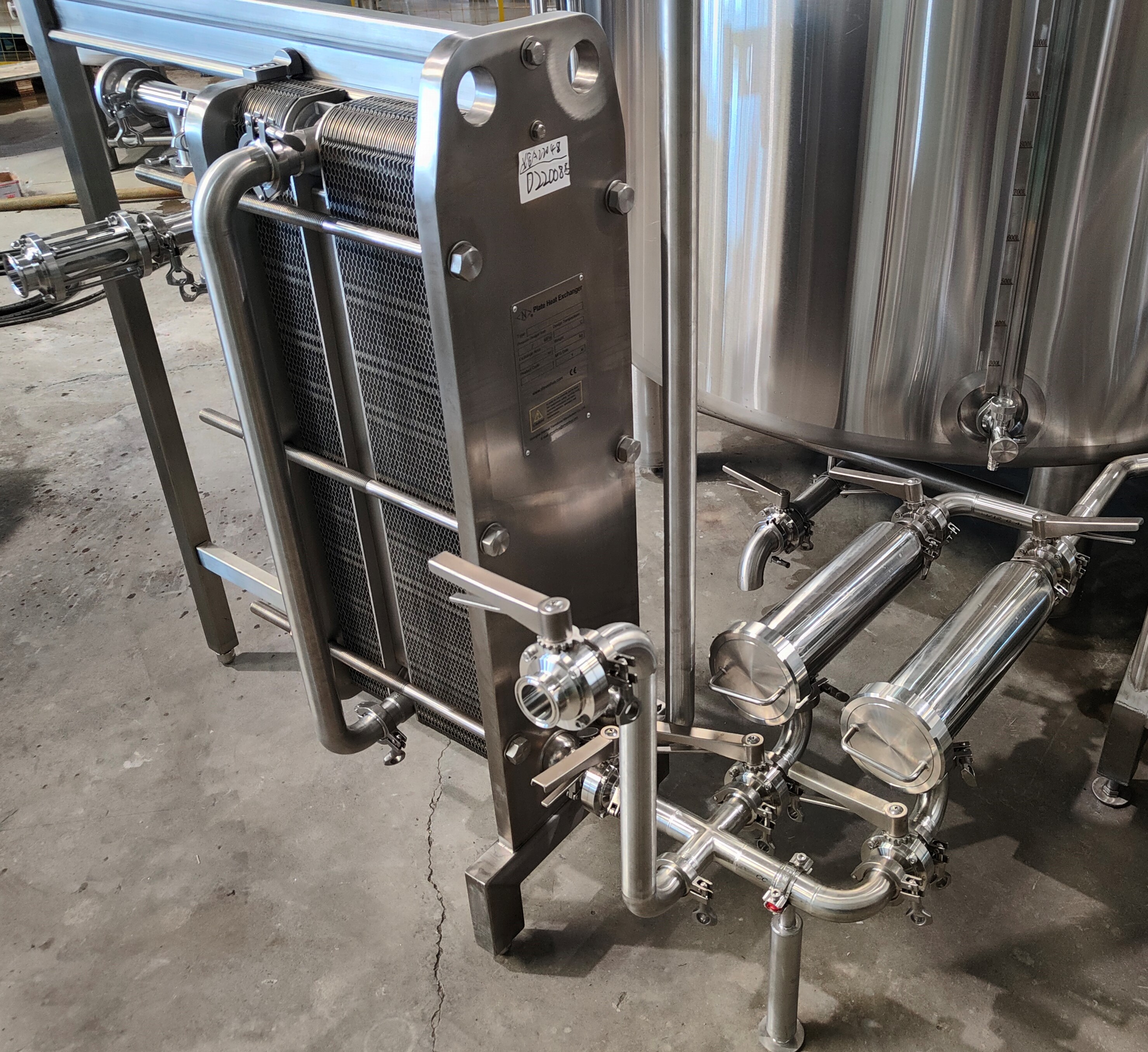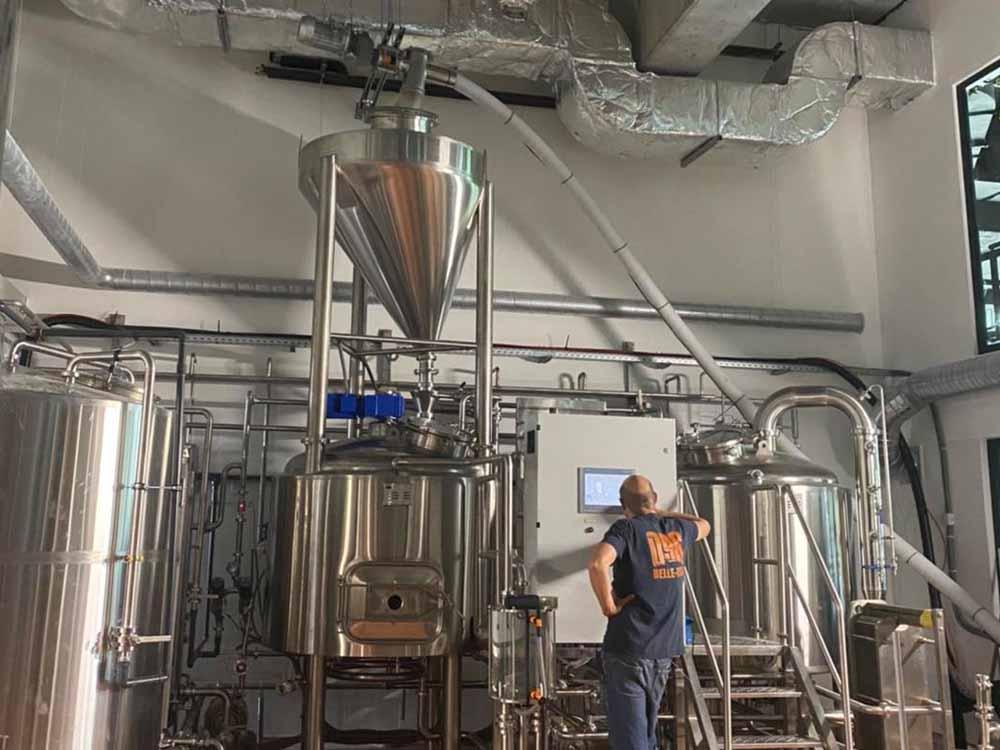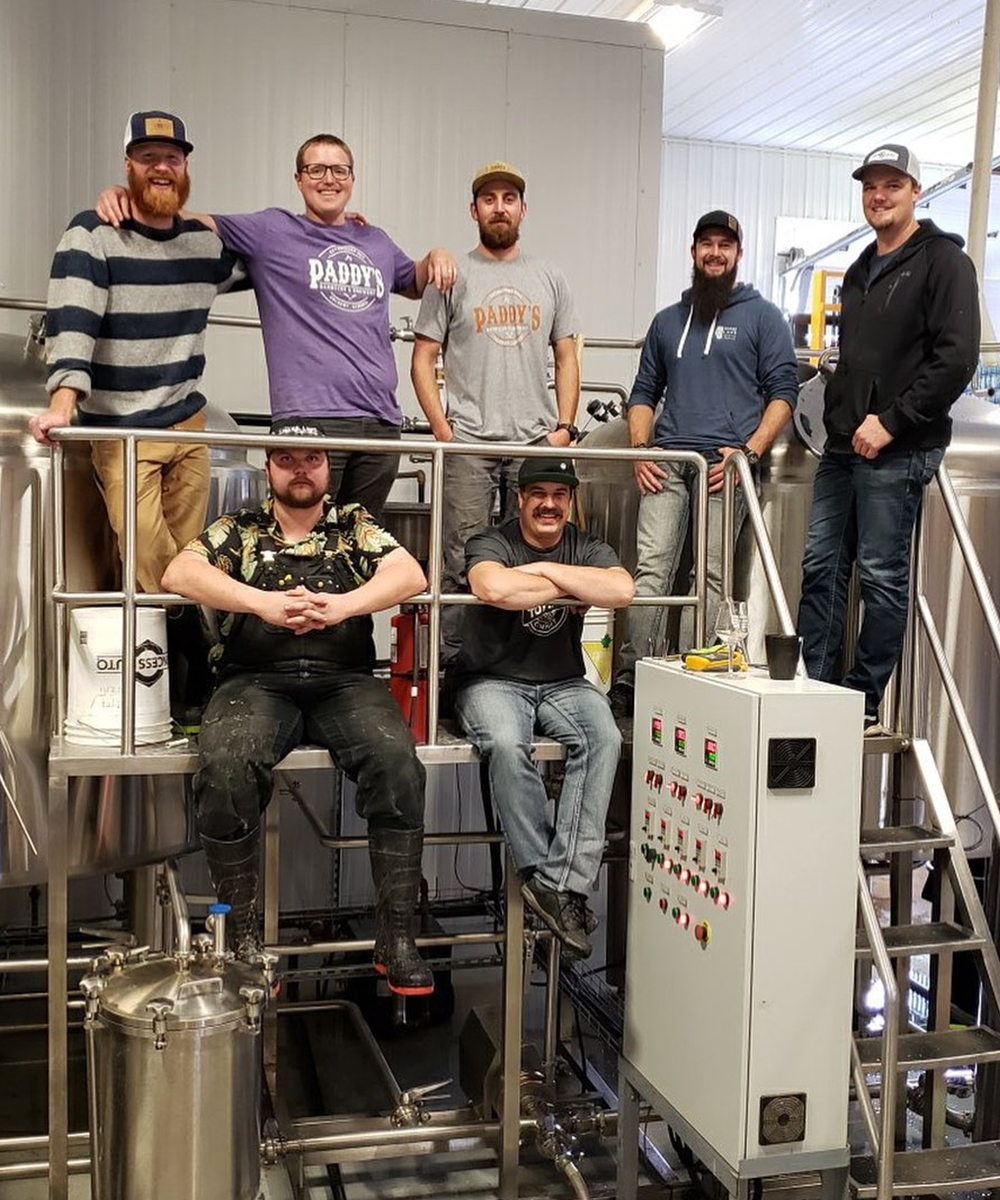Plate heat exchangers are the most common type of heat exchanger in most breweries today and can help a lot when you want to heat or cool wort during processing. A heat exchanger works by transferring heat energy from one medium to another through tubes or plates. In this article, we discuss why a plate heat exchanger is the right choice for your application.

Why do breweries choose plate heat exchanger?
1. Smaller footprint
Because plate heat exchangers are designed with plates stacked together, their surface area becomes compact. This stacked design reduces the footprint of the plate heat exchanger, even for units with the same surface area. The compact size of the plate heat exchanger is very important in breweries with limited space. Its compact and versatile design means transport, installation and maintenance costs are significantly reduced.
2. Scalability
If it is possible to expand the heat transfer capacity later, a plate heat exchanger would be a good choice because you can change the heat transfer capacity by adding and removing plates. The future expansion plan needs to include the initial working size of the plate heat exchanger, the plate capacity, and the space allowance for on-site installation.
3. Reduce Maintenance
A good quality plate heat exchanger can run efficiently for ten years without maintenance. Plate heat exchangers use easy-to-clean plates, some of which also support cleaning with CIP systems. The cleaning cycle of the plate heat exchanger depends on the amount of dirt or scale.
Plate heat exchangers are easier to maintain and operate than shell and tube heat exchangers because they are easier to disassemble and inspect. Of course, you can also easily remove the plates in the plate heat exchanger for maintenance.
4. Heat Exchange Efficiency
Typically, plate heat exchangers are the right choice for breweries as it is the most efficient and cheapest option, and plate heat exchangers are five times more efficient than shell-and-tube designs.
*A higher heat transfer coefficient can be obtained due to corrugated plate and higher speed.
*Allows more heat transfer due to pure counter current flow and close temperature.
*Higher energy recovery can be achieved due to these closer temperature methods.
Advantages of plate heat exchanger
·With a more compact design, less space is required.
·Low-cost option where stainless steel is required.
·Higher work pressure and ability.
·Higher temperature capability.
·Ideal for small district heating, beverage cooling, food and pharmaceutical production, and low load oil cooling applications.
If you are interested in learning more about heat exchangers, feel free to contact me! And if you plan to brew or start your own brewery. TIANTAI could help you answer your questions and supply brewery equipment. We supply 2-150HL complete beer brewing equipment including malt milling equipment, brew houses equipment, beer fermenters/fermentation tank, brite beer tanks, beer bottling machine,beer canning machine, beer kegging machine, hopping machine, yeast propagation equipment. We also supply all auxiliary brewery systems like steam heating pipe and valves, water treatment, filter, air compressor etc. Everything in brewery are all in our list.
Edited by Cassie
E-mail:[email protected]










Get A Quote